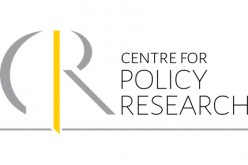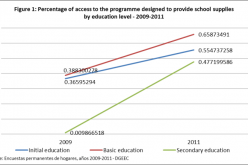Capacity: the Missing Piece of the Governance Puzzle for the Next Agenda
This post has been written by Subrat Das, Executive Director of the Centre for Budget and Governance Accountability in India. He has recently launched a new paper – Good Governance and Effective Institutions: Can we afford to ignore ‘Capacity’ issues? – part of the Southern Voice Initiative.
‘Good Governance and Effective Institutions’ as one of the post-2015 goals for development
The Report of the UN High Level Panel acknowledges the criticality of improving governance. Whether the post-2015 development goals should be about outcomes alone or about both outcomes and some of its core inputs (like quality of governance and public institutions) has been a matter of debate. Civil society stakeholders, especially from southern countries like India, have strongly articulated their expectation that some of the critical inputs towards achieving development outcomes should be acknowledged in the new development agenda.
‘Good Governance and Effective Institutions’ does find mention as one of the post-2015 goals in the Report of the UN High Level Panel. But, probing deeper into the formulation of this goal raises a serious concern; it completely ignores an issue relating to governance that a number of countries should be confronting. The Panel’s formulation of ‘good governance and effective institutions’ as one of the goals emphasizes: providing free and universal legal identity; ensuring freedom of speech, association, peaceful protest and access to independent media and information; increasing public participation in political processes; public’s right to information and access to government data; and reducing corruption and ensuring accountability of government officials.
These parameters are important and are some of the key determinants of the process that translates development policies and resources into the desired results or outcomes. However, implementation of development policies can be constrained significantly if the government apparatus in the country lacks the capacity to perform its roles despite a high degree of transparency, people’s participation and accountability of government officials. Availability of an adequate number of skilled personnel or staff in the government apparatus is perhaps the most important determinant of its capacity; and, if there is an acute shortage of staff, even a transparent, inclusive and accountable government apparatus cannot fulfil its responsibilities well.
Therefore, while the High Level Panel’s emphasis on some of the key parameters of good governance and effective institutions (viz. transparency, accountability, and space for people’s participation) is indeed commendable, we need to take note of the fact that it has completely ignored the problem of the erosion of the capacity of governance in countries like India over the last decade.
The Report of the UN High Level Panel does mention the need for “strengthening the capacity of parliaments and all elected representatives”, and also makes a fleeting reference to people’s expectations of “institutions that are transparent, responsive, capable and accountable”. However, the issue of the weak capacity of the executive (or the government itself) does not find any emphasis at all; an omission that could lead to serious governance failures in the future in countries like India. Staff shortages in the government apparatus in development sectors could result in poor quality of public expenditure in such sectors; which in turn could cause a persistence of development deficits despite increases in the magnitudes of resources allocated for government interventions.
The case of India
Over the last decade, India has witnessed a growing problem of shortage of staff in the government apparatus across a range of sectors (especially in the positions of skilled employees) at the subnational (or state) level. This has contributed to limited coverage and poor quality of government interventions in the development sectors – and has been accompanied by a disturbing trend of poor resource absorption (or fund utilization) capacity of states in the development programmes in many sectors. A number of studies by Centre for Budget and Governance Accountability on government programmes in development sectors in India have revealed that the shortage of staff has led to poor planning, delays in the submission and approval of plans and consequent delays in the flow of funds, and an inability of the government apparatus to carry out developmental activities fully. These problems in implementation seem to have resulted in the persistence of development deficits despite increases in budget outlaysin a number of states.
The main cause of staff shortage in the regular cadres of the state government departments in India has been the reluctance and weakening ability of states to make long-term public expenditure commitments. Over the last 15 years, India’s fiscal policies have not enabled state governments to increase or even sustain the existing levels of long-term expenditure commitments, especially those on staff in the regular cadres of their departments.
One of the root causes of such policies has been the low tax-GDP ratio of the country – which continues to be 17 percent or less, much less than the tax-GDP ratios of other G20 countries and that of some of the other BRICS countries. India cannot address this problem of the inability of state governments to make long-term expenditure commitments as long as its tax-GDP ratio continues to be low.
Suggestions for the current debate on the post-2015 goals
Other developing or less developed countries may be in a similar situation as India with regard to governance capacity. Therefore, it may be necessary to revisit the formulation of ‘Good Governance and Effective Institutions’ as one of the post-2015 goals so as to highlight the significance of governance capacity (in terms of personnel available within the government apparatus) in the process of implementation of development policies in a country.
Additionally, the issue of governance capacity is linked to the ability and willingness of the government to make long-term public expenditure commitments, which in turn is linked to resource mobilization policies of the country. In this context, while the High Level Panel’s emphasis on domestic resource mobilization is welcome, it should have also made recommendations for more progressive tax regimes in the developing countries. Thus, the post-2015 international development framework could also incorporate policy directions to encourage developing countries to pursue fiscal policies that would create an enabling environment for capable governance and public institutions.
1,172 total views, 1 views today









